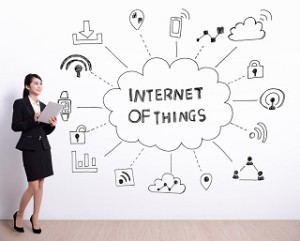From Guest Blogger Charles Bell: Three Ways The IoT Can Help The Environment

Let’s take a look at a few specific ways in which the IoT is helping bring about new clean energy and sustainability initiatives.
The Smart Home Phenomenon
The idea of “smart homes” is probably what’s most exciting to the average consumer where the IoT is concerned. We can now purchase thermostats that learn our habits and preferences, lighting systems that react to our comings and goings from room to room, and even coffeemakers that start brewing in the morning when our alarms go off. On the surface it appears that most of these innovations are meant to make our lives more efficient and comfortable.
However, in many cases smart home technologies also have vast potential to conserve energy in the home (and for that matter in offices as well). This list discusses some of the primary ways in which a smart home can be used to save energy, and while not all the features there are specifically IoT-related, most can be optimized through connectivity. For instance, it’s mentioned that a motion sensor’s connection to a lighting system can result in lights being turned off at all times in unoccupied rooms. Many consumers like the idea that features like these will save them money on energy bills, but the same features are good for the environment.
Transformed Shipping Fleets
While smart home technologies are very visible to consumers, there are a lot of major IoT developments that people don’t tend to be quite as aware of. One that falls into this category is the gradual transition of company shipping fleets to be more intelligent and efficient. Some large companies are now outfitting their fleet vehicles with sensors, WiFi systems, and GPS in order to help operations go more smoothly.
This is mostly done for purposes of quickness and safety. However, this explanation of how the IoT impacts shipping fleets reveals a few things that clearly have an environmental impact as well. Namely, systems are now in place that can recognize and react to conditions such as detours, time delays, accidents, etc. that may have an impact on routing. This saves fleet drivers from waiting in traffic or spending more time on the road than they need to, which means less time idling and spewing emissions from their large, heavy footprint vehicles.
Specific Climate Initiatives
The previous examples illustrated how IoT applications built to help individuals or companies can also be beneficial for the environment. However, as the IoT grows and becomes better understood, we’re also seeing new applications arise that are meant solely to assist with green efforts.
Case in point: this article about an expanding IBM initiative to combat air pollution and other climate change issues discusses how advanced IoT sensors and big data analytics are being combined to monitor a range of issues. By predicting and monitoring pollution conditions, the initiative has already succeeded in reducing ultra-fine particulate matter in its area of concentration. But beyond that, it’s also helping to set the tone for a virtually limitless number of ways in which IoT technology may be used to measure and react to environmental conditions.
These three applications demonstrate a fairly vast range of green impacts we’re beginning to see as a result of the growth of the IoT. And while there are lots of implications for personal convenience and business efficiency, sustainability could ultimately end up being the most exciting benefit of the IoT.
